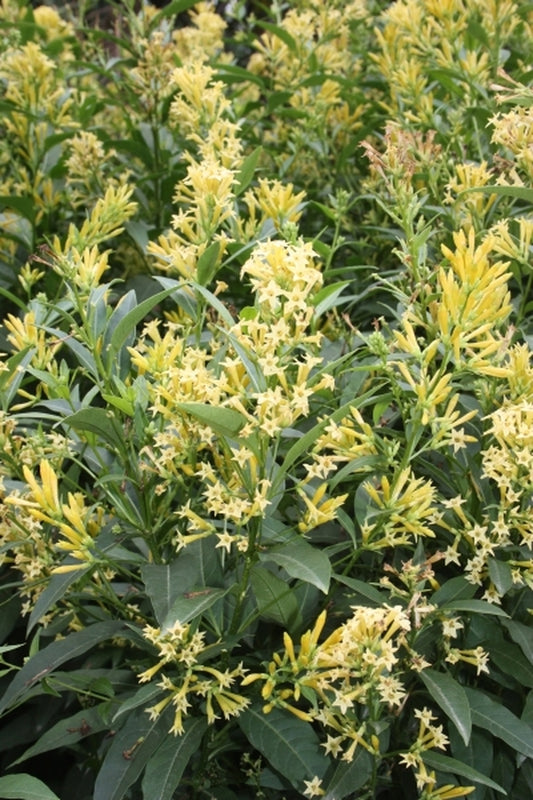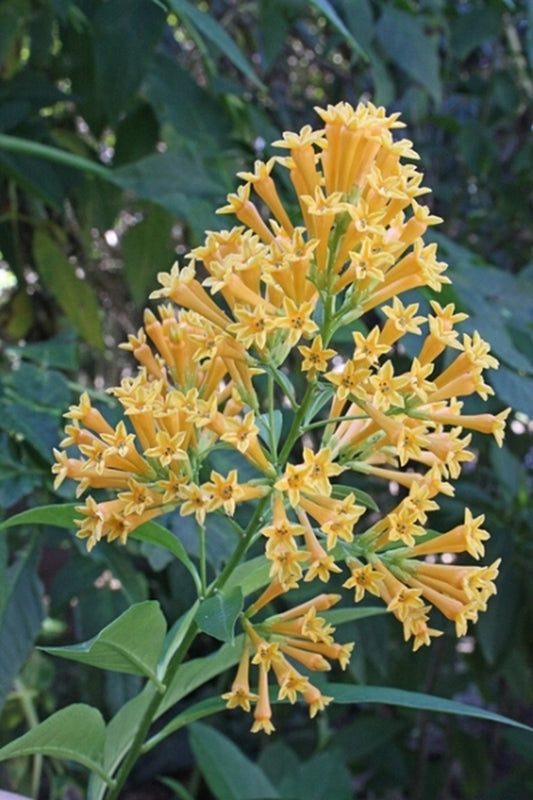Cestrum (Jessamine) likes sunny conditions and typical garden soil. Make sure to plant the fragrant cestrums in a location where you can enjoy their night-time perfume as it wafts through the summer air.
-
Cestrum parqui
Item #: 4794
Zones: 7a to 10b
Dormancy: Winter
Height: 60" tall
Culture: Sun
Origin: Argentina, Bolivia, Brazil, Chile, Paraguay, Uruguay
Pot Size: 3.5" pot (24 fl. oz/0.7 L)
Regular price $25.00Regular priceUnit price per -
Cestrum parqui 'Orange Peel'
Item #: 5981
Zones: 7b to 9b, at least
Dormancy: Winter
Height: 96" tall
Culture: Sun
Origin: Argentina, Bolivia, Brazil, Chile, Paraguay, Uruguay
Pot Size: 3.5" pot (24 fl. oz/0.7 L)
Regular price $25.00Regular priceUnit price per
More Information About Cestrum
The genus Cestrum is a relatively unknown genus of medium-sized shrubs that are related to tomatoes and potatoes (family Solanaceae). Like their vegetable cousins, the cestrum is native to tropical and semi-tropical locations in the Americas, and has very toxic leaves, roots, and branches. Some cestrum species produce powerfully fragrant clusters of flowers. Hummingbirds and butterflies love to drink from the tubular yellow-, orange-, or cream-colored cestrum flowers, but deer avoid them due to their toxicity. In our Zone 7b garden, cestrum plants tend to be dieback perennials rather than true shrubs, so they never grow to their full potential size.
Growing and Caring for Jessamine
Cestrum plants like sunny conditions and typical garden soil. The common name 'jessamine' is derived from 'jasmine' due to the fragrant flowers. Make sure to plant the fragrant cestrums in a location where you can enjoy their night-time perfume as it wafts through the summer air. Sadly, the cestrum flowers are odorless during the day. Flowering begins in early summer and lasts for months until stopped by cold temperatures. Cestrum species prefer hot weather and north of Zone 7 they are best used as annuals or container plants.



